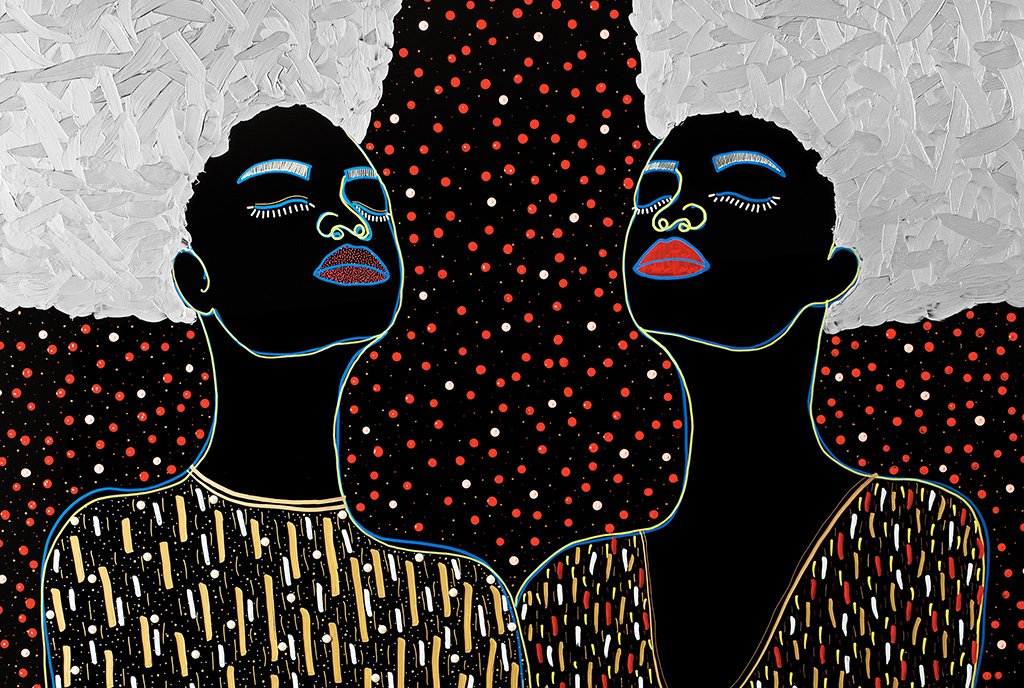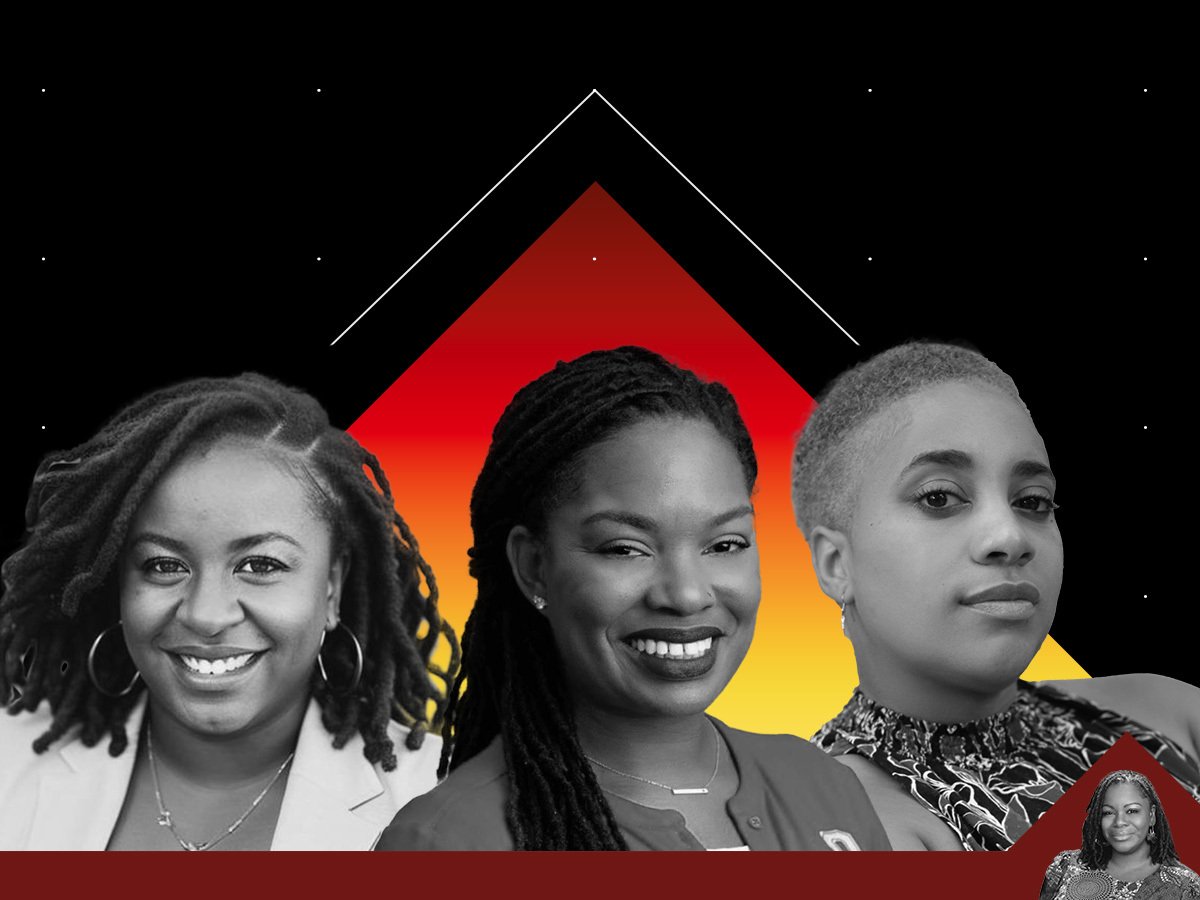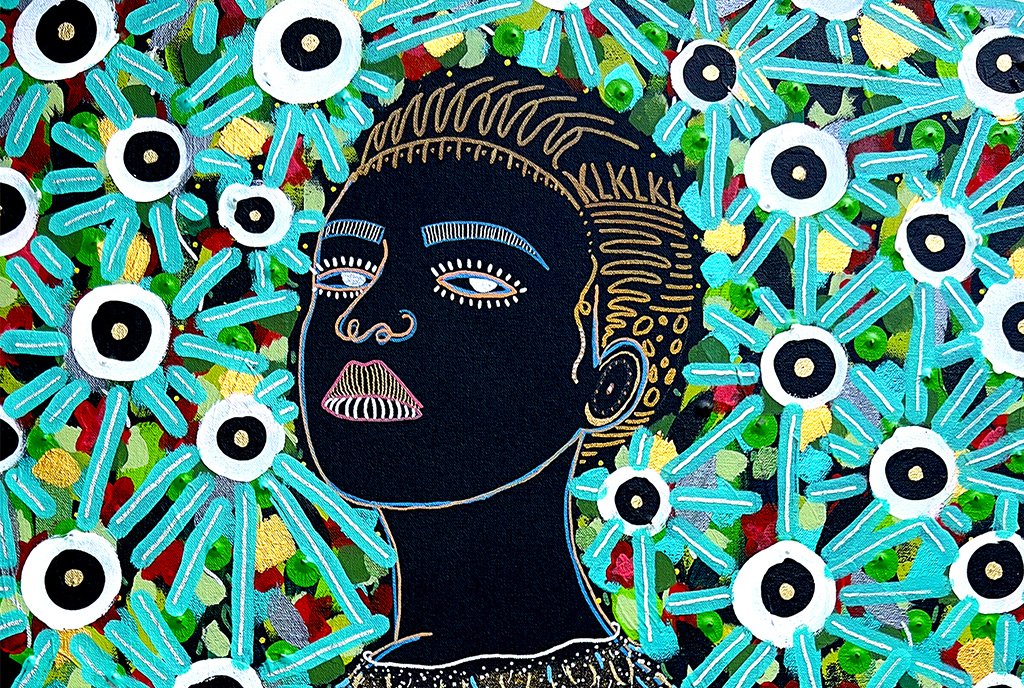
Editors’ note: This piece is from Nonprofit Quarterly Magazine’s spring 2024 issue, “‘Stop Drowning Us, and Stop Making Us Disappear’: A Critical Report on the State of Black Woman Leadership.”
When I was introduced to organizational philanthropy early in my career through a large and influential foundation, I liked what I saw: flowing money to do good. But I quickly grew disillusioned with what I found to be a normalized point of view that presumed Black leaders, Indigenous leaders, and other leaders of color as insufficient without the White gaze.1
The data are clear: those who were trusted to make decisions (and those whom the nonprofits most generously funded) reflect the majority-White foundation leadership. In fact, our own InDEEP initiative—a professional development series for foundation staff committed to racial equity and social justice—calculated a whopping $2.7 billion funding gap between White-led and Black, Indigenous, and other people of color–led conservation organizations between 2014 and 2018.2
What was I to do? Philanthropy seemed like a difficult place for a Black woman to advance institutional racial equity. I had already launched my firm in 1999, so I followed my curiosities as an outside contributor. Over the past 25 years, we’ve worked with scores of foundations representing over $300 billion in assets, with a North Star of reallocating money, power, and influence to the groundswell of brilliant, tenacious, and compassionate leaders of color.
In those early years, I engaged with potential clients covertly, because race work was not seen as “serious.” In addition, if you were a Black woman leading racial equity transformation, you were seen as being deeply self-interested (at best). Over time, however, I have become loud, proud, and more authentic about addressing and resolving the systemic, cultural, and societal trauma of institutional racism in philanthropy. This is part of being 21st-century anchored. It is, simply, good industrial hygiene—and it will be part of the dynamics of how every decision is made, and what leadership looks like, in this next generation: our population is not projected to get any less diverse.
Instead of our organizations or clients making progress at the cost of our own mental health and wellbeing, we can require clear standards and filters for who we’re willing to work with and what ways we’re going to work with them.
And in recent years, it did seem like philanthropy was finally ready to “put its money where its mouth is” where racial equity was concerned. Our team helped to deploy over $300 million in funding during the summer of 2020, when we were brought in to inform decision-making as philanthropy reacted to the racial reckoning in our country. But four years later, many of those actions have proven to be symbolic, declining, and insufficient.3 Where did the money go? Moreover, why have so many organizations not fulfilled their commitments?4 Corporations aren’t required to report out on their fund disbursement, and there’s no entity holding organizations responsible to fulfill their pledges. Some foundations’ commitments to racial equity ebb and flow with the stock market.5 When it comes down to racial equity, many of these institutions’ actions say: Here. Take this money and move along. We don’t want to be bothered with the internal work it takes to become a different organization.
For Black women leaders and those of us deeply committed to racial equity, it can be frustrating to see that what felt like long-overdue true support was actually performative, or at least not nearly strong enough to turn the tide. However, this moment is bringing out the true allies and partners willing to cede power toward efforts led by Black women. Instead of participating in “fakequity,”6 people with genuine intention, curiosity, and willingness to look inward are showing up for a world that can’t “unsee” what 2020 unveiled.
This creates a unique opportunity for Black women leaders caught in the midst of organizational philanthropy’s slow but inevitable reckoning. We can capitalize on this moment to build authentic partnerships, level-set relationships, and practice expansive leadership to hardwire change for generations to come. Instead of our organizations or clients making progress at the cost of our own mental health and wellbeing, we can require clear standards and filters for who we’re willing to work with and what ways we’re going to work with them. And we don’t need to work with everybody. There are plenty of people who are willing to meet us in our humanity. Expansive leadership is defined by brave relationship building while setting community agreements to cocreate the conditions that thread the needle of trust. It is about figuring out how to move together—frailties, flaws, and all—to courageously create change.
Building Authentic Relationships by Putting Relationship before Task
In the philanthropic world, funders are in the position of holding all the cards when working with partners, grantees, and consultants. When those partners are Black women, intersectional racial and gender biases create further unbalanced working environments. Even groups with a mission orientation for progress and sincere intention struggle to amplify Black women’s voices. Racial equity transformation requires deep humility and a bottomless willingness to be okay with not knowing what we don’t know.
Because we work with executives and decision-makers directing large pools of resources, my associates and I often encounter highly inequitable power dynamics. Putting relationship before task7 (a principle I learned from Michael Bell at InPartnership Consulting) has been the only way I’ve been able to effect real change as a Black woman leader. Building trust and relational connective tissue—especially in relationships tilted in power—creates the alchemy required to soar into a just future.
For example, we were up for a contract renewal with a large environmental foundation just as the lead executive, a White man, was heading on a three-month sabbatical. The foundation staff figured he was going to lose steam on racial equity initiatives when he returned, and move on to the next “shiny thing.” His staff were just going through the motions; they needed to see that their leader was serious about racial equity. Without him in the room, they started to hedge their bets.
After returning from his sabbatical, he had more spaciousness to him. I witnessed a renewed commitment to work through his own “stuff.” It started when he communicated to me that he was perplexed about how his staff had shown up in a meeting and that he didn’t think they would change. I told him, “Racism is when you have the power to change things that could benefit people of color and you choose not to do so. When are you going to do something different?” He paused, looked at me, and said, “I’ve never heard it defined that way.” We reflected on this conversation a few months later, and he asked, “Why didn’t you say something to me earlier about how I was showing up?” I responded that if I had, he would have fired us as consultants. He said, “Yeah, you’re probably right.”
That’s the nature of this work. It was a gamble to show up that bluntly. However, we had built enough trust and relationship capital through solid performance to tell the truth. You want to put relationship before task, but it can’t be instead of task.
The work of undoing oppressions within institutional philanthropy is hard. Doing it as a Black woman leader is even harder.
Since that conversation, that foundation’s giving profile has shifted from less than 10 percent of its funds going to Black and other people of color–led organizations to making racial equity a priority—with certain programs’ grants going to upward of 80 percent organizations led by Black people, Indigenous people, and other people of color.8
Sign up for our free newsletters
Subscribe to NPQ's newsletters to have our top stories delivered directly to your inbox.
By signing up, you agree to our privacy policy and terms of use, and to receive messages from NPQ and our partners.
It may take relationship building for months or years to create progress; but “going slow to go fast” is worth it. Actively socializing each others’ humanity to create belonging is what supports bridging the gap between intention and impact, leading to concrete action steps forward. The actual measurable differences of change may be smaller and slower than we’d like,9 but they are moving. And change moves at the speed of trust.10
Further Level-Setting Relationships through Community Agreements
Because change requires a foundation of trust, discussions around community agreements help level-set and guide our relationships to enhance the strategic value for all. Community agreements are consensus statements on what every person in a group needs from one another and commits to one another in order to feel safe, supported, open, productive, and trusting. These agreements allow us to do our best work, achieve our common vision, and serve our stakeholders well. Tactical agreements include processes for getting work done; operational agreements identify procedures or structures we all agree to use; and relational agreements are about how we want to be in relationship with one another.
We first developed community agreements when we realized that we had very different ideas about racial equity and justice than a foundation client did, which was resulting in unmet expectations for the client and the organization. Once we understood that the tactical and operational parts of the work required more checking of biases and assumptions than the work plan permitted, we developed relational agreements to show up differently and acknowledge the power dynamics at play.11 These include, for example, taking the time to understand each party’s expectations, needs, assumptions, and values for a healthy working relationship. Relational agreements name the responsibility of asserting healthy boundaries, because a “no” should not harm the relationship. They take into account the deep difficulty of undoing oppressions, and they put in writing the need to give one another grace, because we will all fail at some point.
The work of undoing oppressions within institutional philanthropy is hard. Doing it as a Black woman leader is even harder. Community and relational agreements offer relief in moments of difficulty: they explicitly acknowledge power differentials and create space for each person to be seen as an equal. They also help us learn to discern the differences between being unsafe and being uncomfortable, so that we can continue the relationship and change process without shutting down or leaving anybody behind. (Knowing the difference between a psychological or emotional threat versus a growth edge is critical in a change process.)
What’s your stage? Who are your partners? What are your values? What is the future you’re living into? It takes all of us—people working at the grassroots, grasstops, treetops, and intergalactically—for it all to come together.
Practicing Expansive Leadership for Practicing the Future
Expansive leadership requires the embodiment of our values and vulnerably living into a future we do not yet have. It includes using conflict as a generative tool when we gather, and not leaving true partners behind. It is about cocreating the right balance between challenging each other and propelling each other into a more just future. You can’t get lift unless you have friction (as we saw in the earlier story with the foundation executive). People leading foundations, nonprofits, and other mission-driven groups are expected to have all the answers. Being able to express vulnerability is neither where nor why executives are called to take the helm; however, this is exactly where we have to be in change management processes for transformation to occur, and it is where the expansive leadership skills of gathering, facilitating, and convening come in.
Externally, we had formed our InDEEP initiative, engaging environmental foundation program staff in integrating racial equity and social justice throughout their grantmaking.12 That program had been powerful in amplifying the voices of Black, Indigenous, and other foundation staff of color in conservation, fostering connection between like-hearted funders, and imagining new approaches to equitable grantmaking. But we had reached a crucial juncture: we needed foundation presidents on board to hardwire change. With founding support from Larry Kramer, past president of the William and Flora Hewlett Foundation, we initiated the Presidents’ Forum, which gained the attention and support of more than 65 foundations with aggregate assets of $113 billion.13 The goal of the Forum was to create a space where foundation CEOs could candidly discuss the most difficult issues and trade-offs around equity, think through these important issues with others facing the same or similar questions, and take action in accordance with their values. Engaging in candid, peer-to-peer learning opportunities and conversations among the top leadership of various foundations created courageous spaces for foundation leaders to discuss, explore, practice conflict, be honest, and build connective relational tissue around difficult issues and actions pertaining to racial equity.
As a racial equity transformation consulting firm, we practice internally what we ask our clients to do externally. Although we are a Black woman–led organization with a staff made up primarily of people of color, we too wrestle with the challenges associated with White supremacy culture and capitalism, such as urgency, perfectionism, and competition. But our community agreements support us in level-setting relationships and, as much as possible, living our values by creating an environment where our team can finish their tasks—excellently—during the confines of the workweek, and have a fulfilling life outside of work. If a colleague is not showing up in alignment, or if someone’s actions are impacting a person or project, we address it head on while knowing that we have each others’ backs.
And (personally), I gather for a sisterhood practice with other Black women (who are in executive-level roles in prestigious organizations). We are a cross-ethnic group that is deeply committed to the practice of self-reflection through group connectivity. We spend time asking ourselves deliberate, pointed questions meant to get to the heart of our values: “Who are we before our titles?” “What does it mean to be a Black, ambitious, credentialed, accomplished woman?” “What can we do collectively because of our influence?” These retreats help us to understand that we’re never more than a sister away. They help us as leaders and human beings to practice the future: a new collective way to really be with each other abundantly and without competition.
* * *
Building partnerships, level-setting relationships, and practicing expansive leadership as a Black woman will look different for each of us. For example, you’re not likely to find me pursuing change at a march or protest. That’s not where I shine. My abilities are not as resonant there. Instead, I feel most at home being in spaces with power brokers in foundations, corporations, and government. I’m good at navigating conflict and midwifing change to influence where their dollars go. Some people don’t always agree with the way I get things done—but I’m clear on my stage and my values.
What’s your stage? Who are your partners? What are your values? What is the future you’re living into? It takes all of us—people working at the grassroots, grasstops, treetops, and intergalactically—for it all to come together.
Notes
- See Janice Gassam Asare, “Understanding The White Gaze And How It Impacts Your Workplace,” Forbes, December 28, 2021, www.forbes.com/sites/janicegassam/2021/12/28/understanding-the-white-gaze-and-how-it-impacts-your-workplace/.
- Green 2.0, “KHA Report Reveals Continued Funding Disparity Between BIPOC and White-Led Green Groups,” Green 2.0 (blog), accessed February 8, 2024, diversegreen.org/kha-report-reveals-continued-funding-disparity/; and see Closing the Gap: Insights from the Field to Close the $2.7 Billion Funding Gap Between White-Led and BIPOC-Led Environmental and Conservation Organizations (Birmingham, AL: InDEEP Initiative, Keecha Harris and Associates, Inc., 2021).
- Alex Daniels, Marc Gunther, and Sono Motoyama, “3 Years After George Floyd, Foundations Say They’ve Changed. Many Racial-Justice Nonprofits Disagree.,” Chronicle of Philanthropy 35, no. 8 (June 2023).
- Tracy Jan, Jena McGregor, and Meghan Hoyer, “Corporate America’s $50 billion promise,” Washington Post, last modified August 24, 2021, www.washingtonpost.com/business/interactive/2021/george-floyd-corporate-america-racial-justice/.
- Daniels, Gunther, and Motoyama, “3 Years After George Floyd, Foundations Say They’ve Changed.”
- Erin Okuno, “What If I Enjoy a Coconut—Is That Cultural Appropriation?,” Fakequity (blog), February 2, 2024, fakequity.com/2024/02/02/what-if-i-enjoy-a-coconut-is-that-cultural-appropriation/.
- Keecha Harris, “Change management is tough work that can pay off handsomely. Here’s how we approach change that centers racial equity and justice.,” LinkedIn Page post, accessed February 8, 2024, www.linkedin.com/posts/keecha-harris-and-associates_racialequity-racialjustice-changemanagement-activity-7044778281887305728-ABLl.
- Keecha Harris, “When I learned about Dr. Dorceta Taylor’s research on the lack of racial diversity in environmental organizations, the data hit me like a ton of bricks.,” LinkedIn Page post, accessed February 8, 2024, www.linkedin.com/posts/keecha-harris-and-associates_racialequity-grantmaking-philanthropy-activity-7054454541932490752-GDKN/.
- Andrea Keller Helsel and Dr. Keecha Harris, “How foundations can promote more inclusive nonprofit boards,” William and Flora Hewlett Foundation, March 7, 2023, hewlett.org/how-foundations-can-promote-more-inclusive-nonprofit-boards/.
- Patrick J. Troska, “Change Happens at the Speed of Trust,” NCFP Blog, National Center for Family Philanthropy, March 13, 2017, www.ncfp.org/2017/03/13/change-happens-at-the-speed-of-trust/.
- Keecha Harris, “Guardrails for Relationships Tilted by Power: How to Keep Everyone on the Road,” NPQ, August 12, 2019, nonprofitquarterly.org/guardrails-for-relationships-tilted-by-power-how-to-keep-everyone-on-the-road/.
- Green 2.0, “KHA Report Reveals Continued Funding Disparity Between BIPOC and White-Led Green Groups.”
- “The Presidents’ Forum: Linking People, Resources, and Results,” Keecha Harris and Associates, accessed February 8, 2024, khandassociates.com/the-presidents-forum/.











